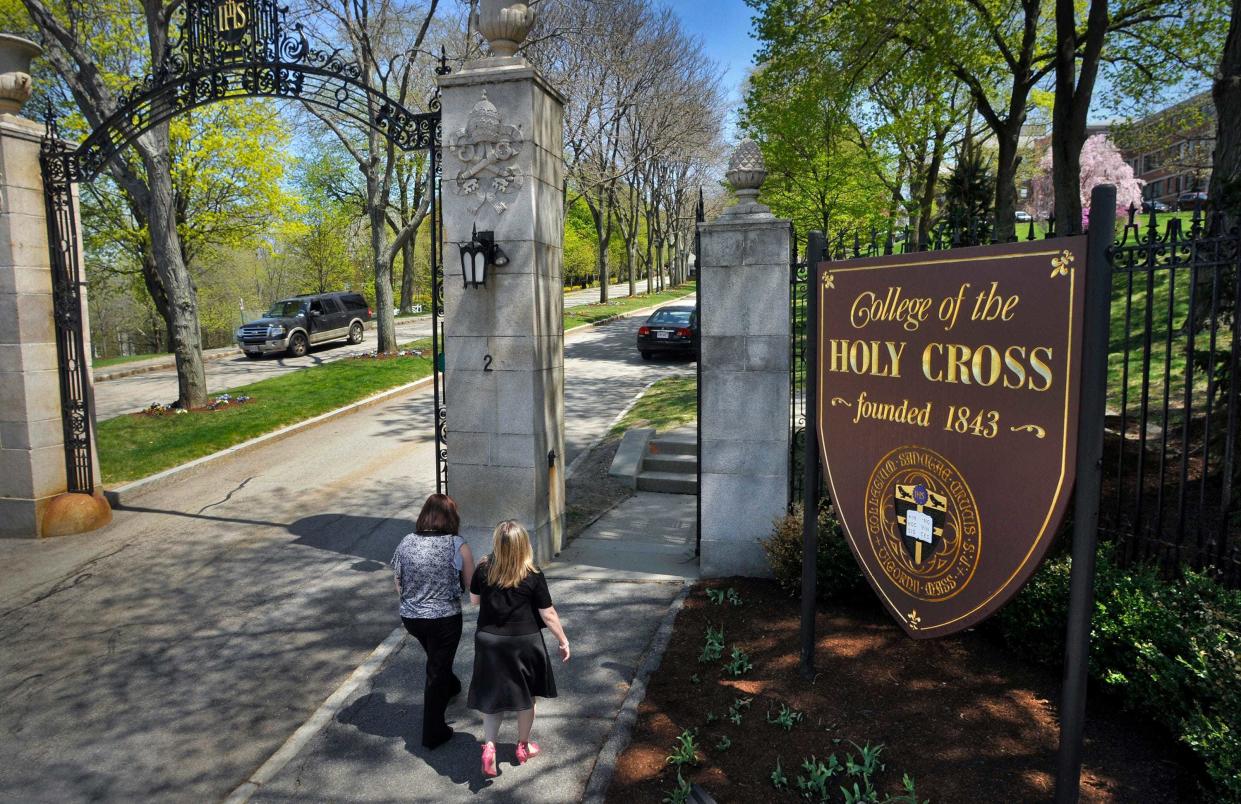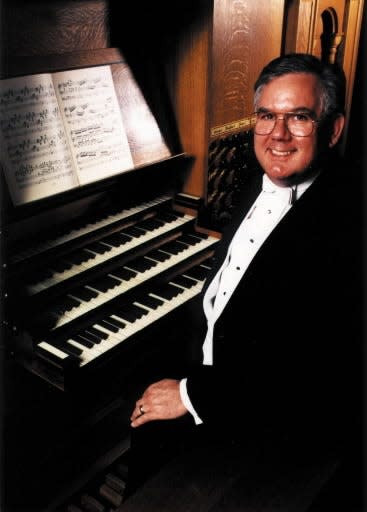Holy Cross releases investigators' report on sexual misconduct by faculty

WORCESTER — Concluding an eight-month investigation into the factors that enabled College of the Holy Cross faculty members to engage in multiple decades of sexual misconduct, investigators found, among other issues, an absence of written policies or procedures that govern professional boundaries.
Between January and August 2022, investigators Gina Maisto Smith and Leslie Gomez, with the Philadelphia-based law firm Cozen O'Connor, conducted 75 interviews with alumni, students, staff and faculty, as well as an extensive document review.
The college released the report published Tuesday.
“Our review is not a reinvestigation of prior incidents, nor are we seeking to retread ground that has already been fully investigated by the College or prior external investigators,” they wrote in the report. “Our goal in requesting and receiving individual narratives from survivors was to identify the manner in which abuse was reported to have occurred as it relates to cultural, structural, and organizational factors.”
The investigation was launched in the wake of allegations by students against former college organist James David Christie and former professor Christopher Dustin. The school received reports of misconduct involving Dustin in 2017 and Christie in 2018; those reports surfaced publicly during the 2018-19 and 2019-20 academic years.
The college banned Christie from the campus in 2019, and cut ties with Dustin in 2020. Dustin has a pending federal lawsuit that accuses Holy Cross of firing him unfairly.
Among the 75 people interviewed, 21 reported having experienced sexual misconduct while at Holy Cross in incidents spanning from the 1950s to the 2010s.
Investigators also heard from 19 alumni and two faculty members who described “sexual and gender-based harassment and violence” involving faculty and staff over a more than 60-year period.

Additionally, investigators reviewed a litany of documents, which included all faculty sexual misconduct case files currently available in the Title IX office, records of reports of historical abuse, and letters and written accounts submitted by survivors.
The investigators found several factors contributing to an environment that allowed faculty members to engage in sexual misconduct.
List of factors revealed
Such factors included a “breakdown in trust” between faculty and administrators that led to “negative or counter-productive” interactions between campus community members; gaps in reporting by faculty and staff and reluctance to embrace responsible employee reporting; and some departments with unprofessional working environments, bullying and incivility.
Other “relevant factors” included:
alumni described a difference of understanding in social norms regarding relationships between students and faculty members - both in earlier times and in the present
issues that relate to power dynamics including actual and perceived power imbalances
the impacts of tenure
actual or perceived retaliation
the perception that boundary violations were openly known and accepted by others, such that survivors believed the conduct was perceived by others as appropriate
the nature of the college’s response to reports, particularly if the perception or reality of that response was negative
“Some alumni, faculty, and staff members identified as a continuing concern the College’s patriarchy and clericalism — the idea that a few individuals hold power and authority while others exercise deference to those who are in power,” the report said. “Other alumni, faculty, and staff members described the College as an institution that is susceptible to exceptionalism — the idea that the institution or its faculty, as a whole, are special or outside the norm of elite academic institutions.”
Those interviewed in the investigation said they were concerned that Holy Cross’ culture created a space for faculty members to “act in manners that may not fall within professional boundaries,” and that contributed to an environment where others may excuse “potential grooming behaviors,” because the faculty members in question are “viewed as special in some regard.”
The investigators also identified issues surrounding the college’s approach to sexual orientation, gender, gender identify and gender expression.
“Many community members perceived a continued disconnect between traditional Catholic teachings regarding homosexuality, the College’s stated approach, and the lived experiences of College students and alumni,” the report said. “Some individuals who identify as LGBTQIA+, particularly alumni, still report considerable shame based on their interactions with the College or the Catholic Church.”
Alumni contributions
The report said investigators heard from many alumni who identify as gay or bisexual who said that the college’s culture created a “heightened vulnerability” for abuse by faculty and staff because of their sexual orientation.
It allowed the faculty and staff to take advantage of “their naiveté and youth and exploited pre-existing barriers to reporting.”
The report also said that, when issues are reported, the absence of effective structures can allow those in power to discount or downplay the reports.
Holy Cross was also delayed in strengthening its Title IX program, compared to other educational institutions, the report said.
“Notably, the College did not have a functional and effective Title IX Office until 2015,” the investigators said. “Although the College had policies governing harassment dating back to 1992, and prohibited consensual relationships between faculty and students in 2004, the Title IX framework was new to the College, as was the role of a dedicated Title IX Coordinator.”
There was also confusion surrounding the role of the Title IX coordinator, according to the report, with some misunderstanding the purpose of the role.
“Some misunderstood the role of the Title IX Office and believed it should have been an advocacy resource for survivors, as opposed to a neutral and impartial office tasked with prompt and equitable responses that seek to eliminate, prevent, and address reports of sex discrimination,” the report said.
The investigators also said that there was “significant” instability between 2015 and 2020 in the Holy Cross Title IX office.
The college had five different people, the report said, who served as Title IX coordinator, including some who served in an interim capacity, who were tasked with introducing and building an office that was new to the school.
“A common misperception we hear across the country is that Title IX offices are legalistic, not caring, compassionate, or empathetic,” the report said. “We heard the same perception at the College.”
They said that perception derives from the “procedural rigor” required in current Title IX regulations, not just at Holy Cross, but across the country.
However, the report said, the perception may be particularly pertinent at Holy Cross given the “confluence of ‘professionalization’ efforts across the campus.
“Individuals uniformly reported that community stakeholders deeply cared about the issues related to Title IX, but the misunderstanding of the Title IX Office’s core functions may have inhibited its ability to effectively serve the community,” the report said.
EthicsPoint reporting portal
Holy Cross has taken steps to improve the functions of the Title IX office, the report said, by streamlining the reporting process and increasing awareness, creating a centralized reporting webpage, and an investment into EthicsPoint, an anonymous reporting portal.
The current Title IX coordinator has focused on building community awareness of the office’s functions and the office has expanded, due to added resources, and now includes two investigators and an assistant director of prevention and education.
In addition to reviewing the factors that contributed to allowing faculty sexual misconduct, investigators sought to provide recommendations for “evidence-based actions to improve culture, restore trust, acknowledge accountability, and decrease student vulnerability.”
The report recommended five main categories:
restorative approaches “to address the harms of the past”
preventive work “to reduce the potential for sexual misconduct through enhanced educational programming”
strengthening structures, policies and practices “to shift the conditions that may have allowed misconduct to occur”
foster increased reporting
enhance responses and effective practice to reports when misconduct occurs
The investigators also included a sixth recommendation: Ensure the process for implementing the recommendations has the appropriate hallmarks of trust, accountability, visibility and sustainability.
“Trust is built on a foundation of steady engagement and communication with representative constituents over a sustained period of time in a manner that demonstrates character, candor, care, competence, and collaboration,” the report said. “In that regard, the way these recommendations are implemented is as important as the recommendations themselves.”
It said that Holy Cross’s prevention efforts must be “pan-institutional” to be effective.
“The responsibility for moving forward as an institution is a shared one, wherein administrators, faculty, the Board, and students all play a vital role in preventing sexual and gender-based harassment and violence,” the investigators wrote. “While the College can provide the framework in terms of policies, procedures, and practices, as well as educational programming, achieving cultural change must be a community effort.”
This article originally appeared on Telegram & Gazette: Holy Cross faculty sexual misconduct investigation findings released

